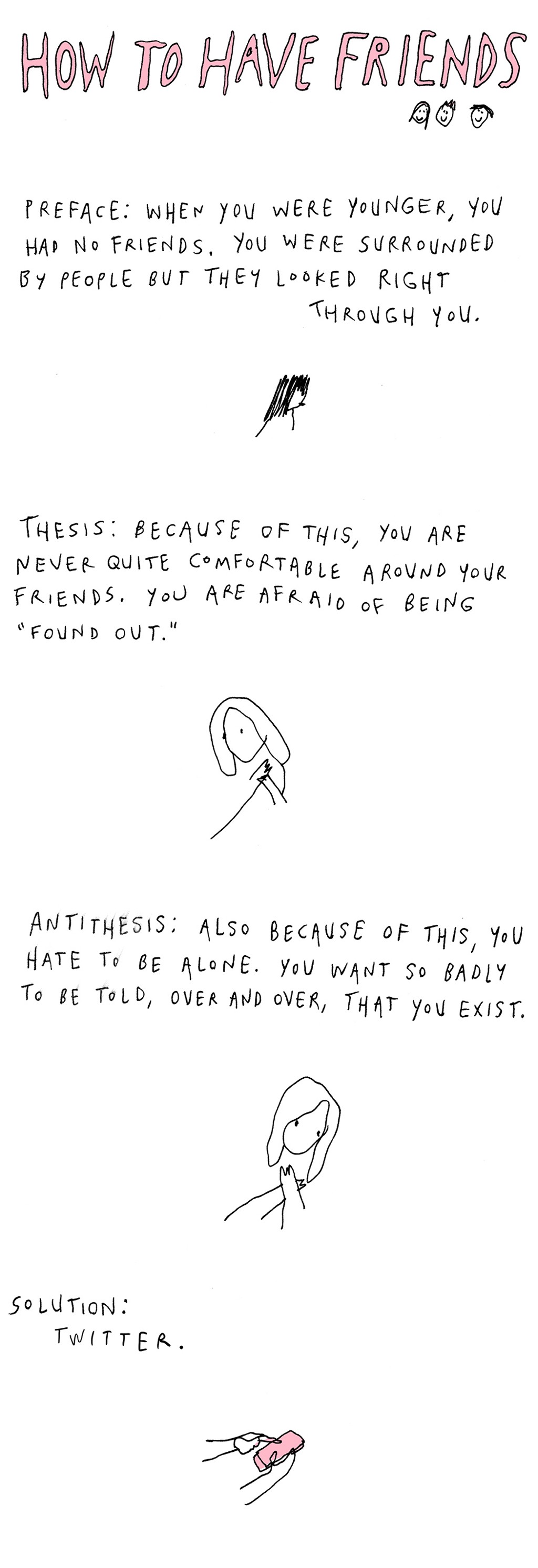The Extended Metaphor of the Cat and the Eczema
Was the symbolism in “The Night Of” maybe too much?
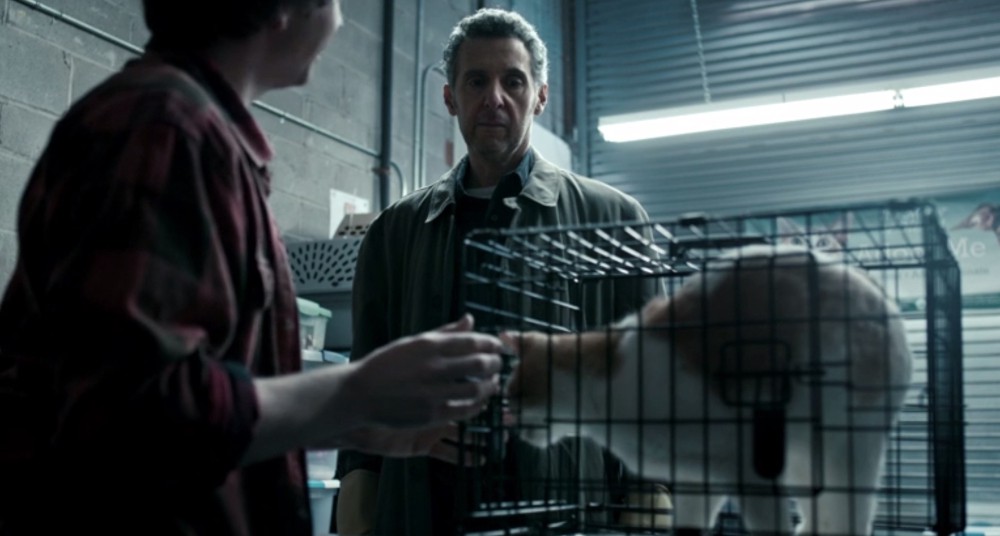
John Stone’s feet are so riddled with eczema he can no longer wear shoes, only a pair of beaten-up sandals, into which he frequently shoves his scratching chopstick. He is a bottom-feeder of a lawyer, his life a parable of loneliness. His ex-wife barely tolerates him, and the only person more embarrassed by him than the entirety of the New York criminal justice system is his own son. A stray cat found near the scene of his client’s alleged murder is his only true companion, despite his allergy to it.
The eczema is all over Stone’s body, but it’s especially intolerable on his feet, the swollen and shriveled slabs of flesh he needs to propel him forward. The doctors he sees are useless — their solutions cost Stone his money and/or his libido. He cares for the cat through a closed door, to protect himself from the dander. He shoves in toys, food, and clean litter, then takes solace in the corresponding sounds of the cat playing, eating, and shitting.
So begins the ballad of the cat and the eczema, the most prominent extended metaphor upon which the HBO miniseries “The Night Of” hangs its story, and near-total lack of resolution. Each scene is set piece of overt symbolism, sending up an endless array of analogies, which don’t contradict one another, but do undercut the potential for meaningfulness. Perhaps deliberately so.
In probing the potential guilt of murder suspect Nasir “Naz” Khan, the miniseries uses so much overt symbolism, that potential metaphors can be read onto even the most mundane actions. When everything appears to mean something, the heft of authorial intent fades away, leaving a Rorschach test of audience opinion in its place. For a show lacking in true closure, the possibilities become infinite.
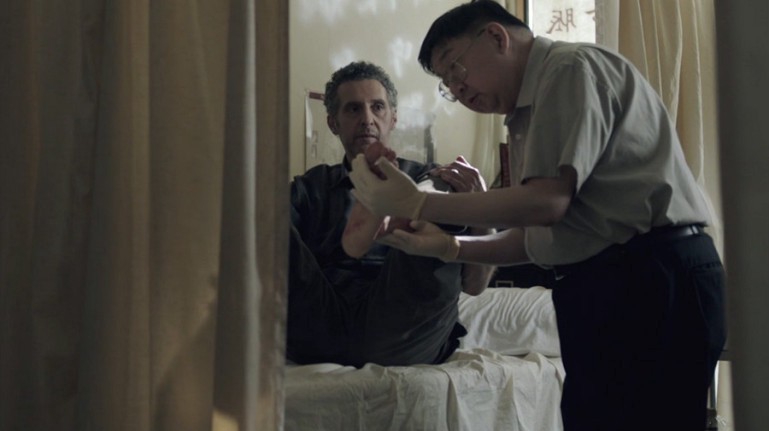
With the exception of the pilot, every episode of “The Night Of” vacillates wildly between prestige drama and tacky procedural. When occupying the space of the latter, it was often comically garish in its poetic melodrama. In the season finale alone, the following examples would have been clear to even a first-time viewer:
•A mediocre, apathetic lawyer changing into sneakers and squeaking out of the courtroom after losing a case.
•Naz seeing his prison “protector” Freddie beating the crap out of a punching bag when he realizes Naz is leaving prison.
•Freddie giving Naz a copy of The Call of the Wild when he is released (because prison changed him, and he is wild now, and also “The Call of the Wild” is the name of the episode).
•Naz leaving the prison with two large plastic bags, because he has a ton of baggage now, OK?
“The Night Of” asks a lot of questions, the most prevalent of which is, What does it all mean? When dealing in such a dense set of metaphors, everything might be significant. But in this show, the things that truly matter remain as unclear as the “who” of the whodunit. The victim was murdered with a knife, and there was a convict near the scene whose go-to weapon is a knife. The victim’s stepfather, whom she openly hated, will inherit a small fortune in addition to her $10 million brownstone upon her death. These red herring plot points echo the conflation of overarching analogies, almost as if they have been reverse engineered. The show is warning its audience not to fall for the obvious distractions, while refusing to answer which items qualify as such.
In the end, Naz goes free, though nearly every life in question has been ravished by the trial, and we must look to the most consistent metaphor(s) for anything even remotely resembling resolution. With its final minutes, the show nudges us, once again, to the cat and the eczema.
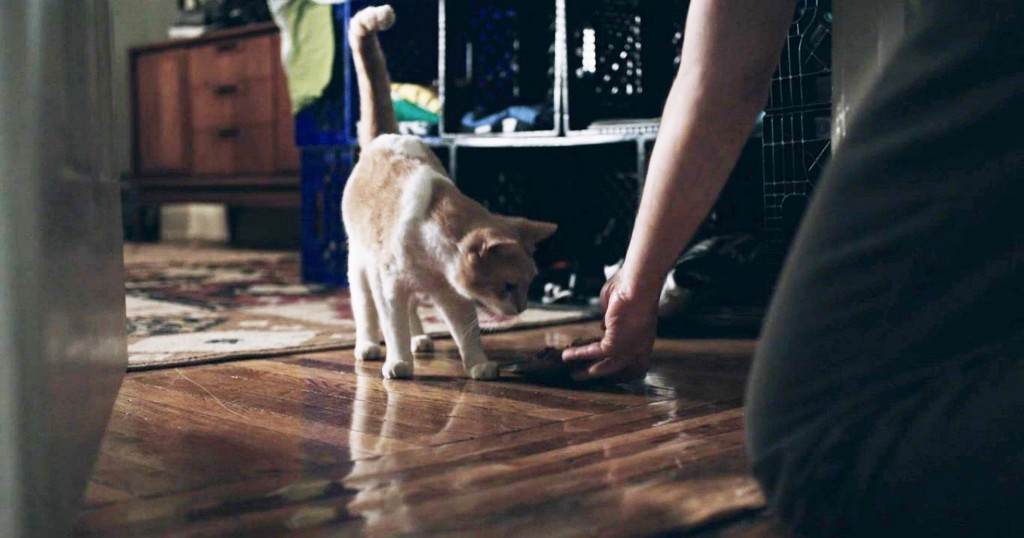
By the penultimate episode, Stone’s eczema appears to be gone for good. He’s taken the cat to the pound, as if it was another failed scratch for his itch, carelessly thrown away. It’s a Chinatown doctor who finally grants Stone relief with a haul of non-FDA-approved drugs. (Stone sitting smugly in front of an all-male support group wearing closed shoes for the first time in years is possibly the most exuberantly ridiculous moment of the show. Maybe of any show.)
His eczema returns with a vengeance the day before a deadlocked jury will lead to Naz’s release. In an instant, the shortcut remedy turns on Stone. The dermatological affliction returns, this time leaving even his eye sockets encased in the red rot.
Later, while he’s on the phone with a client, an ASPCA commercial seizes his attention. “These are the forgotten ones,” the voiceover narrates. Stone sighs, as if this is too obvious even to him. He pulls on the gloves he must wear to cover the marks of his modern-day leprosy, and leaves his apartment. A time-lapse of light fades in and out beneath the door before the cat walks down the hall.
We never see Stone return home, however, and that’s a symbol in and of itself. We didn’t see all the pieces, and we never will. No character receives a happy ending — or any ending, really — and instead we have a portrait of the prison-industrial complex, painted in the colors of a skin rash and pet care.
The cat represents the individuals that get lost in the system, left to wander aimlessly except for the rare cases where someone benevolently takes an interest in them. The eczema is the plague of the system, Stone’s outsider status, and the excruciating resistance of fighting back. The doctors are the institutions, which claim they will help, but never, ever offer up a true solution. The non-FDA approved drugs are the improper path, the illusory panacea, which has ramifications that put the initial malady to shame. Struggling toward relief, or, at least, temporary distractions is the only option, even if it is all in vain.
Or maybe not. Maybe searching for answers in the criminal justice system is as futile as searching for meaning in the overt symbolism of “The Night Of.” Sometimes eczema is just eczema. Sometimes a cat is just a cat.
Bat For Lashes, "Joe's Dream"
Here’s what’s happening in your world.
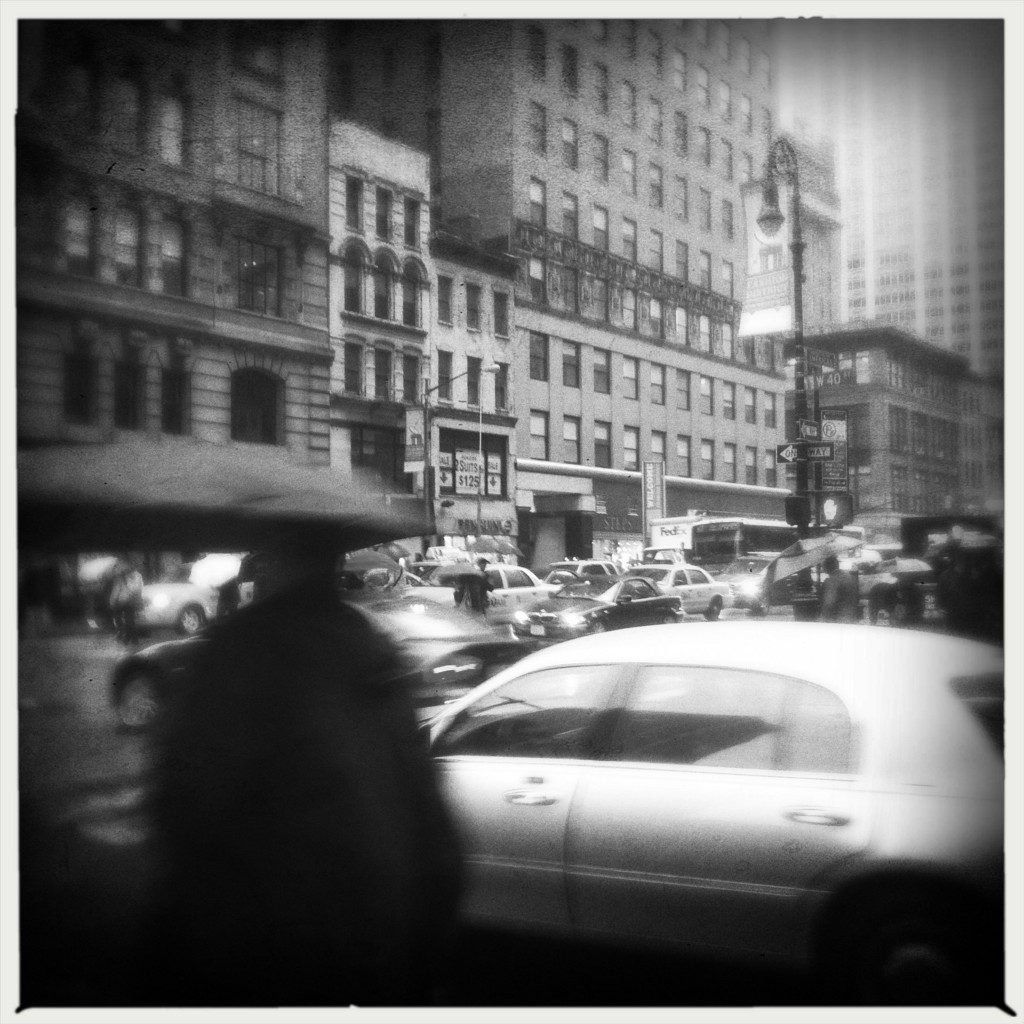
There is nothing more important for you to know this morning, in case you somehow missed it last night, than the fact that Kanye West has a slush drink maker that dispenses frozen Hennessey and Coca-Cola with him on his tour.
kanye has a henny and coke slushie machine backstage pic.twitter.com/F12sRfBzg7
— @_anupa
In other news, as reported earlier, the New York Times is now exclusively a paper for people who live in the borough of Manhattan, the rich-people part of Brooklyn, and equivalent locations in the major cities of the rest of the world. It’s an international paper for an international elite, which I suppose makes sense when you consider who’s left to read it these days. Finally, the weekend is going to suck, weather-wise, which I guess is nature’s way of prepping you for winter. Okay, now that you’re up to speed on the world, some music. Here’s another track from Bat for Lashes’ latest, The Bride. Enjoy.
New York City, August 30, 2016

★★ Opening the windows brought in cool air and the seeming prospect of mercy, but the sun quickly betrayed that promise. A man slept on the sidewalk, carefully positioned in the shadow of a wireless public internet kiosk, his head up against the base. Crosswalk stripes looked like louvers in the lenses of someone’s fully mirrored sunglasses. The difference between the clear southern sky and the gray piled up beyond the Empire State Building was dramatic and meaningless. Baked-on ooze surrounded the trash cans on the sidewalk. The homeward subway offered a choice between cars with bodies pressed up to the doors or cars with the telltale tipped-in windows marking broken air conditioning. By Times Square the hot uncrowded cars were crowded too; new riders got on with looks of dread and dismay. It was hard to judge whether the air was already cooler uptown after the short ride or it was just the contrast with the foulness of the train.
Here's The Hot New 17th Century Biography For Fall
No, come back, it’s good.
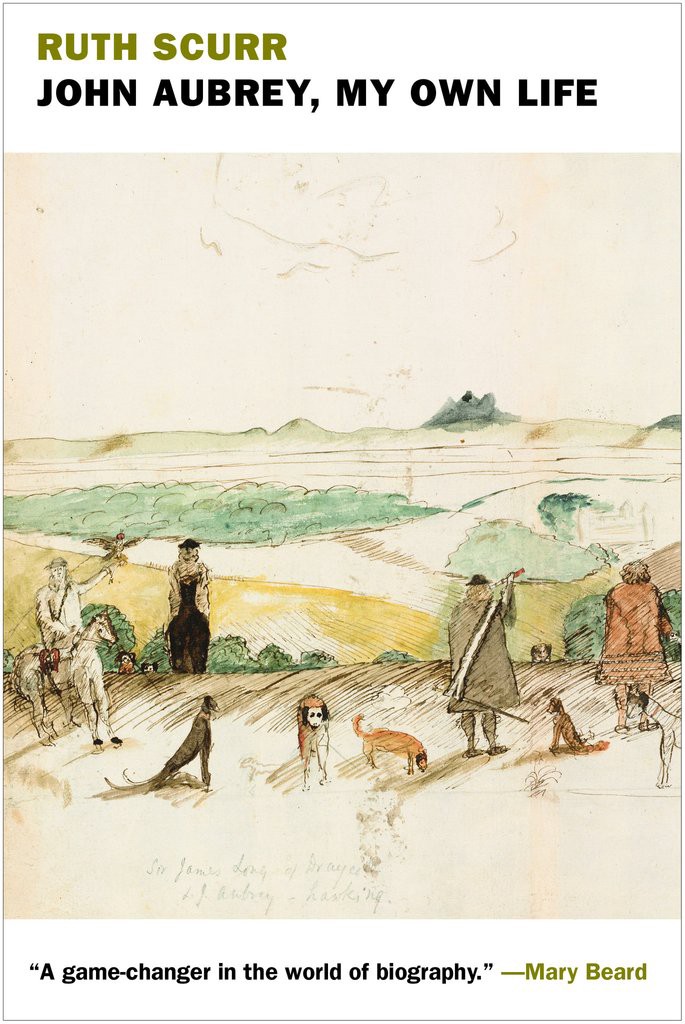
I know we shouldn’t be in any rush to push summer out the door, but it is time to start thinking about what you’re going to read come fall, when everything around you says it’s the season for a Serious Book. I mean, if you read books and you listen to the seasons. Anyway, let me recommend Ruth Scurr’s ingenious “autobiography” of John Aubrey, who you might know from his gossipy collection of mini-biographies, Brief Lives. You might not know him at all, and that’s fine too. Here’s the deal:
John Aubrey, My Own Life… reimagines what biography can be. This intimate diary of Aubrey’s days is composed of his own words, collected, collated, and enlarged upon by Ruth Scurr in an act of meticulous scholarship and daring imagination. Scurr’s biography honors and echoes Aubrey’s own innovations in the art of biography. Rather than subject his life to a conventional narrative, Scurr has collected the evidence — the remnants of a life from manuscripts, letters, and books — and arranged it chronologically, modernizing words and spellings, and adding explanations when necessary, with sources provided in the extensive endnotes.
What this doesn’t tell you is just what a pleasure this book is to read. The work Scurr does to make the book more modern ensures an astoundingly compelling narrative, one that passes by much more swiftly than its 500-odd pages would lead you to believe (or, to be frank, fear). What’s remarkable about this book is how contemporary so much of the 17th century appears through Aubrey’s telling, and how his writing, even (or especially) at its most self-deceptive, makes him seem so much like someone you know (or are). It’s a tremendous accomplishment and something that doesn’t even make you feel like you’re doing Serious Reading, but you still get the points anyway. It’s out next week, so go ahead and order it now so once you start getting upset about summer being over you have something to distract you. You’re very welcome.
Most Television Shows Should Only Be One Season
Maybe two.

You know what would have been a great TV show? “Homeland” if it ended after the first season. Just: fade to black, never find out if Brody detonated or not, the end! It would have been a nice echo of the last episode of “The Sopranos,” which is probably the last show that should have been allowed to have many seasons. Instead, we have a dead Brody, Carrie has a baby, and did you know that Homeland is still on television? Yeah, we’re about to hit Season 6 and renewal for 7 and 8 is around the corner.
“True Detective” should never have made a second season. This is an indisputable fact. “UnREAL” could have stopped after Season 1 just fine, and then we wouldn’t have had to be worried about how crazy Season 2 got. (Also, I know it’s a podcast but there’s no way Serial is ever going to live up to the hot mess that is the Hae Min Lee murder: a perfect crime for a true crime series because it happened in the ’90s when we knew a lot but still not enough. You used to be able to get away with murder, you know, and that was the inflection point, I’m convinced. Another post for another day.)
Last month, all anyone watched or talked about was the Netflix Original series, “Stranger Things,” which was creepy and thrilling and had a sometimes distractingly rich plot, but it had a pretty tidy resolution (except for Barb). That is, until the end when that kid vomited up a slug, which is a) gross, and b) annoying, because now we have to talk about our dumb theories until 2017!!!!!!! Netflix is already teasing us:
The adventure continues. Stranger Things 2 is coming 2017.pic.twitter.com/3H4WR3DGEj
Oh my GOD. We haven’t even elected the next president and you want me to read into the titles of the next eight episodes?? I hope that the reason for this nonsense is “We Have To Film All The Episodes Right This Second Before The Puberty Hits,” but even so, give us some room to breathe. Just this week we have new fall television starting! You’re like an ex that won’t go away, just give me some space please and then we’ll hook up again next year when I forget how much of an emotional rollercoaster you were the first time. And what’s better than a one-season romance? One season of television. “That’s a miniseries,” you might be thinking, but you’d be wrong. A television show has hope, you genuinely think this one has the potential to go on and on for many years until the original writers have moved on and all the kids have gone to college and you’re ready to feel something again. Think about some of the greatest cult favorite shows, cut down in their prime:
“Pulling” (two seasons)
“Freaks and Geeks” (one season)
“Deadwood” (three seasons, fine)
“Twin Peaks” (two seasons)
“My So-Called Life” (one season)
“Flight of the Conchords” (two seasons)
“Party Down” (two seasons)
“Shannon’s Deal” (Balk told me to add this one, one and a half seasons)
“Don’t Trust The B In Apartment 23” (I also added this one for Balk)
“Studio 60 On The Sunset Strip” (debatable, one season)
They’re the cursed twenty-seven year old rock stars who die before their time. They were brilliant but had serious problems. We think? They were weird, and maybe too odd. But also so special. Somehow they weren’t right for this world, and your sneaking suspicion is it’s the world’s fault. But mainly we’ll remember them for how great they were. We’ll only ever truly appreciate (and then performatively overappreciate) them now that they’re gone. I know what I said earlier about miniseries, but “Black Mirror” is excellent television. Can you tell I love short stories? More people should aim to make this kind of television. I’m looking at you, Lena Dunham. One to two seasons. Three, max. Thank you and have a nice day.
The Lessons I Learned From The Anthony Weiner Story
Here’s what I knew and what I didn’t know. Here’s what I know now.

What I have realized about Anthony Weiner over the last few days is that he did some very bad things, but I should feel sorry for him. It is okay to point out the bad things he did while also making it clear that he has a very serious problem that we should be compassionate about. I’m glad that there are pundits out there who will remind me that you can both condemn the person who did the bad things and express pity about the sickness that makes the bad things happen, sometimes even in the same paragraph. Now that I know this I am both angry at the Anthony Weiner who did those actions and sad for Anthony Weiner who couldn’t help himself from doing those actions.
I am also thankful to journalists, particularly the ones who live in New York City and make six figure salaries, for explaining to me how the American people will view the bad things Anthony Weiner did in the context of the ongoing presidential campaign, a race in which his soon-to-be-ex-wife works as an aide to the Democratic nominee. It’s a good thing that the press can tell the rest of us how a regular Joe — or Jane — in Cuyahoga County, OH, will change his — or her — opinion about the campaign because of this critical news. I’m glad that the people who know our country best because of their lived experiences can provide this important analysis to someone like me.
Most of all, I am in debt to the voices in the media who have reminded me how important it is that I have strong opinions about this story. At first I was inclined to treat it as a sick sideshow whose relevance to the race and the future of our country was tenuous at best and grossly superficial and desperate at worse, a tawdry situation seized on with unseemly glee by a pack of jackals who will mock a man’s illness while overstating its significance all in the service of headline buzz and horserace analysis. It turns out this is probably one of the most meaningful events in the election, and my discomfort with it is an indictment of me and my own lack of seriousness. I could not be more grateful for everyone who kept me “woke” about this issue.
Finally, whoever did that explainer for “dick pics”? You’re the greatest heroes of all. I don’t know what we did to deserve a press like the one we’ve got, but I guess they’re right when they talk about America as an exceptional nation. Great job, everyone!
What Can You Learn From Usher the Überperformer?
It’s all in the abs
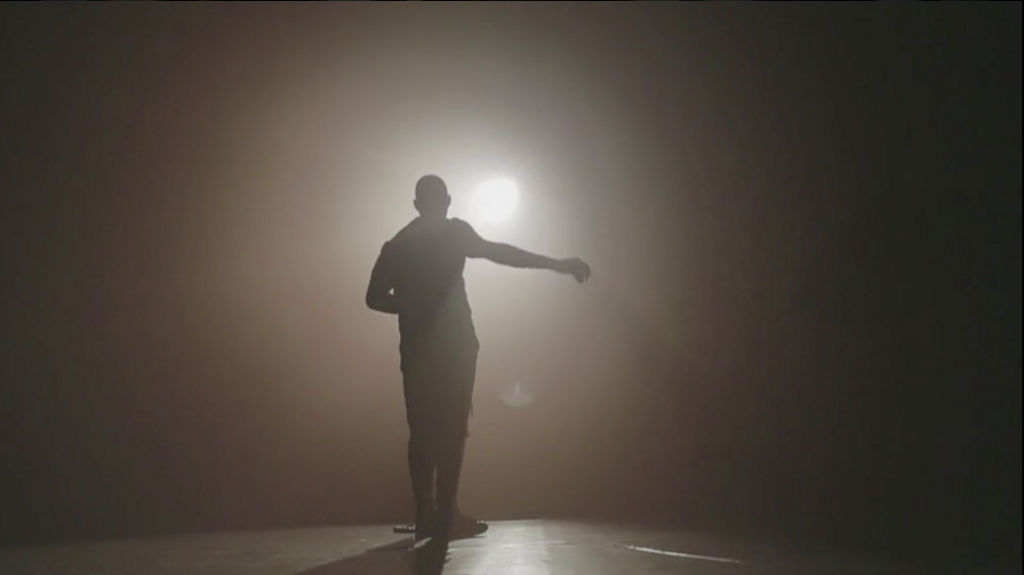
Most of us forget that Usher is a bit of a weirdo. These days he’s glossy and grown up, a famous hot dad playing Sugar Ray Leonard in a movie this fall. But watch the video for My Way (1997), the title track from his first platinum album: It’s a psychedelic Clockwork Orange-meets West Side Story/Grease showdown that starts in a sexy bounce house and ends in Los Angeles’ Sixth Street Viaduct, Tyrese the dapper Kenickie to Usher’s Danny Zuko In A Technicolor Dreamcoat. In the final dance-fight sequence, the dreamcoat Comes Off to reveal a lime green silk shirt and a number of sexual! dance! moves! The abs haven’t become a thing yet, but it’s pure Usher, dapper and smooth and nasty and quirky, smirking at the end of each tightly wound tiptoe-spin. You can imagine him in a planning meeting saying, “here are some movies I like. I want to do all of them but with cooler dance moves and a bounce house that is inexplicably set up in a used car lot.”
You’d hope we would get a little bit of this in “Usher Teaches The Art of Performance,” a sixteen-video series produced and sold by MasterClass, a company that hopes to teach you anything you might want by using the voice and experience and likeness famous person you want to emulate. Who better to teach you how to be on stage, then, than a triple threat with glossy abs and five platinum albums who has given us such bangers as “Nice & Slow,” “Yeah!”, “Love in This Club,” and the subtle masterpiece that is “Climax”? You pay $90 to pop the hood, and you hope to understand a little bit of the weird and the way that Usher got to the sleek sunglass-wearing place he is now. What you mostly get, though, is the gloss.
After clearing his throat through the issues of why we’re here and what we’re going to do, Usher begins with what proves to be some of the most useful material in all sixteen video snippets, between 10 and 15 minutes each, that compose this “class.” He talks about gleaning inspiration, of studying your idols and then studying theirs. In class number four, a title card flashes on the screen: A THIEF STEALS, A GENIUS BORROWS. Interlude: Usher tells us to “take the inspiration from greatness, and create something that gives you an identity.” Next title card: GO FROM IMITATION TO INSPIRATION.
Usher tells us to “take the inspiration from greatness, and create something that gives you an identity.”
It feels silly and obvious on one hand; on the other, this bit is the purest little nugget that Usher gives us in all of sixteen “classes,” even the one called “Creating Your Personal Brand.” I’d been feeling creatively sluggish, and this felt like a little yank out of something, a reminder of all the things I’m supposed to remind myself of when I think my brain might not work anymore.
In the message board that lives below each video, Usher is nowhere to be found (even though I’ve been promised “feedback” from him), but an out-of-touch moderator does chime in to pose prompts or respond to questions. By reading my classmates’ comments, I learn that most of them are aspiring singers and dancers and most of them are enormous Usher fans. (I’m a former stage performer who is now a writer and mostly performs in the way that she Is Performative Online but sometimes does karaoke and sings Gilbert and Sullivan songs in her bedroom; I don’t have any Usher-like aspirations but I do enjoy a well-executed dance move.) One thing we all have in common is an understanding that we are all Here, and we want to get There.
Most of what Usher gives us are platitudes, interspersed with encouragement and weird interjections about his abs and the way women liked to be talked to and how it’s actually possible for a dude to have sex appeal in the absence of a six-pack. (On sex appeal: “It started when I decided to make my abs a part of the conversation…. Women love a man who can make them smile, so use that….On the other hand, you’ve got chicks who love when you talk to them crazy…. Sensuality isn’t the only way to go; you can actually be smart. You can actually have a brain. And that’s sexy!”) His objective — teaching us the Art of Performance — is murky, and you get the sense that he hasn’t defined it himself. He’s mostly just talking about How To Be Usher. How does a natural performer explain the magic of what he does?

Creative study can be broken down into a venn diagram of studying a craft (e.g., taking classes in singing or dancing or acting or writing); studying work you admire (reading, watching, listening, then analyzing and emulating); and then learning how to access and process and project your own creativity. MasterClass and Usher are attempting to dip a toe into the middle section of this and come out with something gold-plated; it’s a near-impossible feat in such a short span of time.
Usher isn’t going to actually teach us how to sing or dance here; he can only encourage practice. (Christina Aguilera on the other hand hosts a class on singing, which seems ostensibly more useful, if also potentially hilarious.) His encouragement to study works we admire is a valuable one. And while he briefly gets to the question of accessing your own creativity, he’s not able to teach that essential concept in meaningful ways. He mostly just advises us to make things our own, a very vague way to suggest a very essential process.
In her essay on embarrassment from A Director Prepares, Anne Bogart argues that “embarrassment is a partner in the creative act — a key collaborator. If your work does not sufficiently embarrass you, then very likely no one will be touched by it.” Teaching creative work requires teaching vulnerability; it’s a hard thing to do while trying to maintain an air of polish. In this sparse theater, Usher is both acting and trying to teach us how: acting as The Performer and The Teacher, with shiny threads pulled from his own life as examples to educate us. The platitudes fall flat; after class eleven or so, it gets objectively boring. And while Usher recognizes the value of failure and the necessity of weakness — he harps on how bad he once was at dancing, it almost wasn’t part of his repertoire, can you believe it! — he treats it as something to overcome, not to integrate.
Teaching creative work requires teaching vulnerability; it’s a hard thing to do while trying to maintain an air of polish.
On our screens, Usher is prerecorded and untouchable; we students, then, are the only ones who risk true embarrassment here. (Unless you count the fact that Usher is doing this embarrassing in the first place, but that is up to you!) And the act of taking a MasterClass — of sitting alone on a couch or a bed, sweatpants and all, trying to ingest some inspiration — is a little embarrassing too, in a Waiting For Guffman sort of way. When asked to upload a video of myself performing, I get the same queasy pit in my stomach as when I think about the prospect of taking an improv class. Is taking a MasterClass something that a true performer would do? Probably not. Is it something that a superfan would do? As Usher would say, “Yeah!”
The “alternate-reality classroom” format, essentially a black-box theater with a spotlight on the Talent, is the value proposition that differentiates this from, say, an interview or a DVD extra. You get the sense of being in an episode of Glee, where one of the teens — let’s say it’s Rachel — who went off to Tisch comes back and sits in a chair while their younger cohorts all sit on the floor around her, legs crossed and eyes wide, as she spews out platitudes about creative work and “making strong choices” and “inhabiting a character.” All of which gives the impression that the real audience for this class isn’t an aspiring performer — that person should really be spending $90 on dance classes or books or theater tickets if you ask me! — but the Usher superfan looking for some exclusive content. He even implies this, switching between “my fans” and “you” as if we’re all the same thirsty mass.
When you love an artist deeply, they can spew out the most vanilla sort of bullshit and it will land like poetry in your gooey little brain. You hang on to every word and anecdote the way you do with a crush, calling mundane details of their life “so cute” and “inspiring.” If a writer I loved — I’ll use John Jeremiah Sullivan, because all of Usher’s talk of Michael Jackson got me thinking of JJS’s brilliant GQ profile from 2009 — spewed 90% bullshit and 10% gems for a few hours, I would surely shell out ninety bucks for that, particularly if this person wasn’t often interviewed. I would suck the life out of every word and story they told, and I would tell myself it was worth it. This is basically the premise of, say, the Longform podcast or Inside the Actors’ Studio, only it’s free, and usually the bullshit comes in at well under 90%.
When you love an artist deeply, they can spew out the most vanilla sort of bullshit and it will land like poetry in your gooey little brain.
And, okay: We don’t even get to see Usher dance! We see old footage of his tours, of the time he sang at Michael Jackson’s funeral (we get it, you’re famous!), footage of him looking at a mural in a foreign country (“if you have the ability to travel…..definitely do that.”) There’s a sweet little clip of him remaking Gene Kelly’s Singin’ in the Rain performance, after which he explains how it inspired the final rain-dance scene in U Got It Bad. A beautiful little anecdote! But I would have much preferred, say, a Song Exploder-style breakdown of one of his great music videos or performances — to understand the stories behind each bit, to hear how all the components lincoln logged together to become a piece of work. (I might not pay $90, but I’d probably pay $40 for a Song Exploder episode about Frank Ocean’s “Ivy.”)
A class on performance by a celebrated performer is trying to be too many things at once. The idea of mastery here is a joke, just like the “worksheets” that read like poorly written Sparknotes intermingled with the things Usher’s PR person mutters in their sleep. (One of them links to a webpage that doesn’t exist; it’s supposed to clue you in on more ways to develop your personal brand.) And treating performance as something that can be taught on the surface level does a disservice to everyone, to art, to performers, to people watching Usher in a bounce house. In explaining the utility of personal experience and embarrassment in art, Bogart says that “revelation is necessary to warrant attention.” There are no revelations in this class, only catchy sentences and weak encouragements and a few cute moments when we catch Usher being Usher.
A class on performance by a celebrated performer is trying to be too many things at once.
As I write this there’s a girl standing in the coffee shop looking very slim and tidy and holding a copy of 101 Things I Learned in Film School. Turns out it’s part of a series — “For Dummies” for Millennials, maybe — and includes such gems as a paragraph on a page teaching you to “Show Don’t Tell,” with an accompanying illustration across the fold. This is showing; this is telling; don’t do the former. In a different medium, this is what the MasterClass format gives us: a condensed crash course masquerading as bite-size genius.
Soundscan Surprises, Week Ending 8/25
Back-catalog sales numbers of note from Nielsen SoundScan.
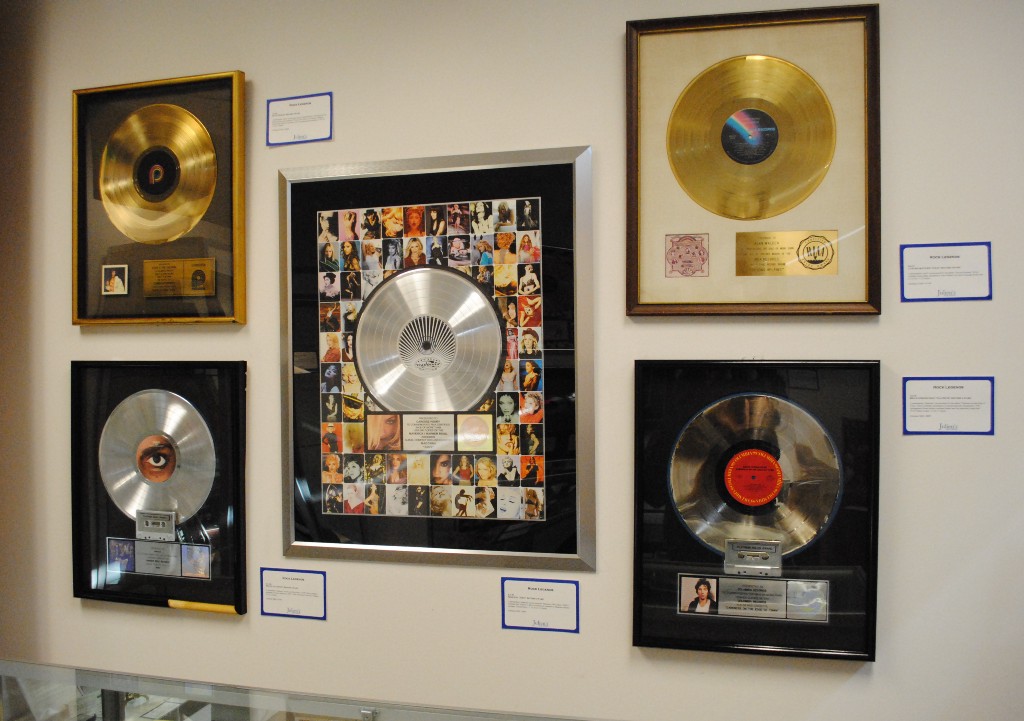
The definition of “back catalog” is: “at least 18 months old, have fallen below №100 on the Billboard 200 and do not have an active single on our radio.”
Literally who and why is Twiztid. Don’t @ me.
Blown away 2hear that Gene Wilder has passed away prayers for him and his family #RIP #WillyWonka – jAMIEpic.twitter.com/ZCM6b49PqR
That username! Moving on, we have Biggie climbing the charts, and Frank Ocean still surging off the back of the release of Blonde. Faith No More (sorry but I had to Google) had a new album last year? It’s one of those bands people like to initialize: FNM, CCR, DMB, STP, GFY. No Doubt! Why isn’t No Doubt on the back catalog top 200 every week?? Hot Fuss was an excellent album name and a pretty good album. Go back and listen to it and immediately be transported to 2004!
As previously discussed, there are several reasons why an album could pop up into the back catalog, among all the usual dad music that’s consistently on this chart every week: death, a new record, or some other kind of news event. So I always Google the artist to see what’s up (for example: Twiztid’s 2003 Green Book was reissued the week before last). The lead singer of The Tragically Hip was diagnosed with terminal brain cancer and they’ve just finished what is probably their final tour. It was an extremely big deal in Canada and now every single one of their seventeen albums is on the Canadian Billboard charts. The Stone Temple Pilots are still looking for a lead singer; in the meantime they recorded a country version of “Janie’s Got A Gun” with Steven Tyler:
2. TWIZTID GREEN BOOK 5,761 copies
4. NOTORIOUS B.I.G. GREATEST HITS 5,679 copies
8. OCEAN*FRANK CHANNEL ORANGE 4,478 copies
32. FAITH NO MORE WE CARE A LOT 2,271 copies
50. NO DOUBT SINGLES 1992–2003 1,877 copies
85. KILLERS HOT FUSS 1,406 copies
141. TRAGICALLY HIP YER FAVORITES 1,147 copies
190. STONE TEMPLE PILOTS CORE 986 copies
(Previously.)
Adam Bryanbaum Wiltzie, "Lithium, The New Era"
Stop being Wednesday already.

This week, huh? I bet you’re even more “How is it only Wednesday?” then you are on any of the other Wednesdays when the unbearable Wednesdayness of things gets you down. I understand. I can’t tell you that things will be okay, but I can tell you that eventually it will be Thursday, and then Friday, and then the week will be over. But for now it’s still Wednesday, and you’re just going to have to deal with it. You’re not alone, if that helps. No, I know, it doesn’t help. I wish there were something else I could do for you. Say, how about some music? Here’s a track from Adam Bryanbaum Wiltzie’s soundtrack to Salero, a film about the salt-gatherers of Bolivia and how the demand for lithium is changing their lives. You know, a typical summer blockbuster. Anyway, enjoy. It can’t stay Wednesday forever.

